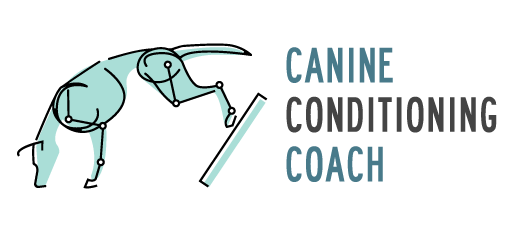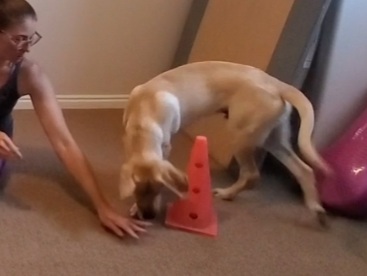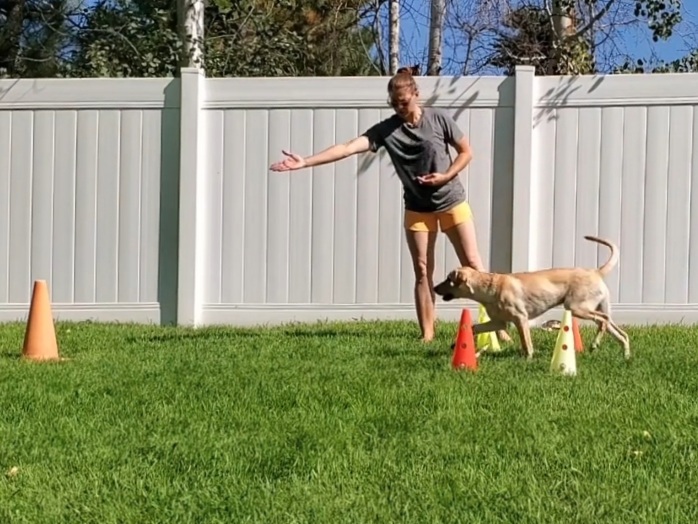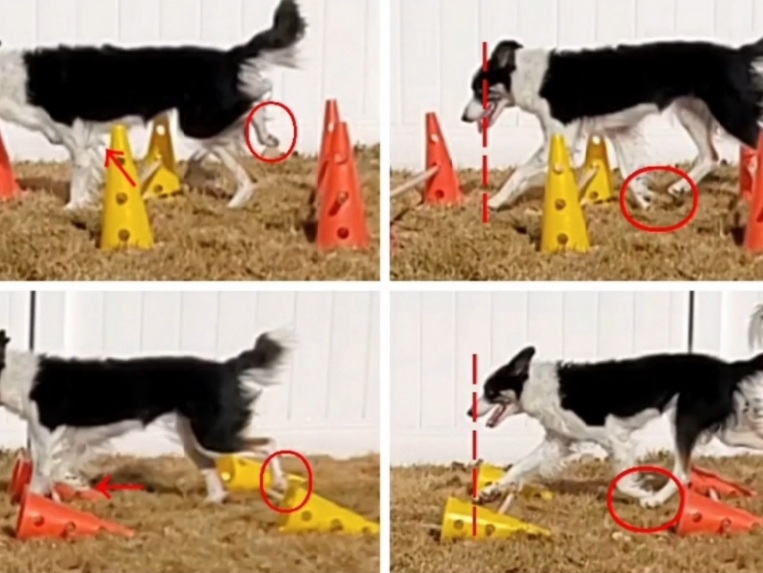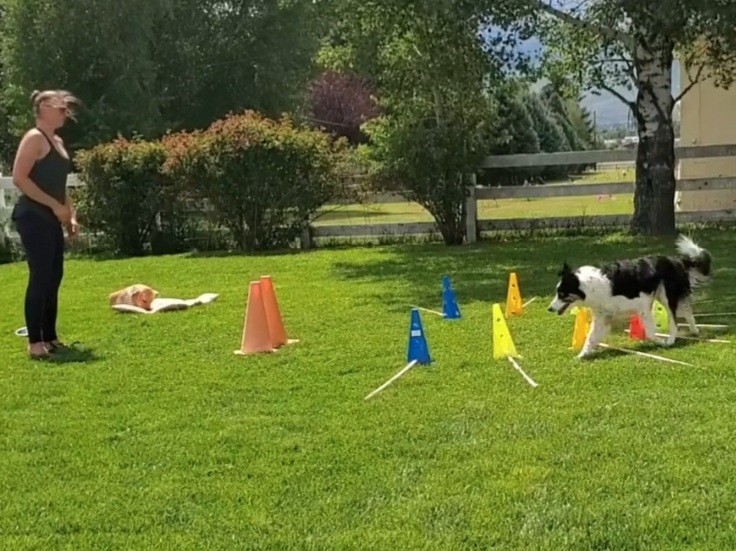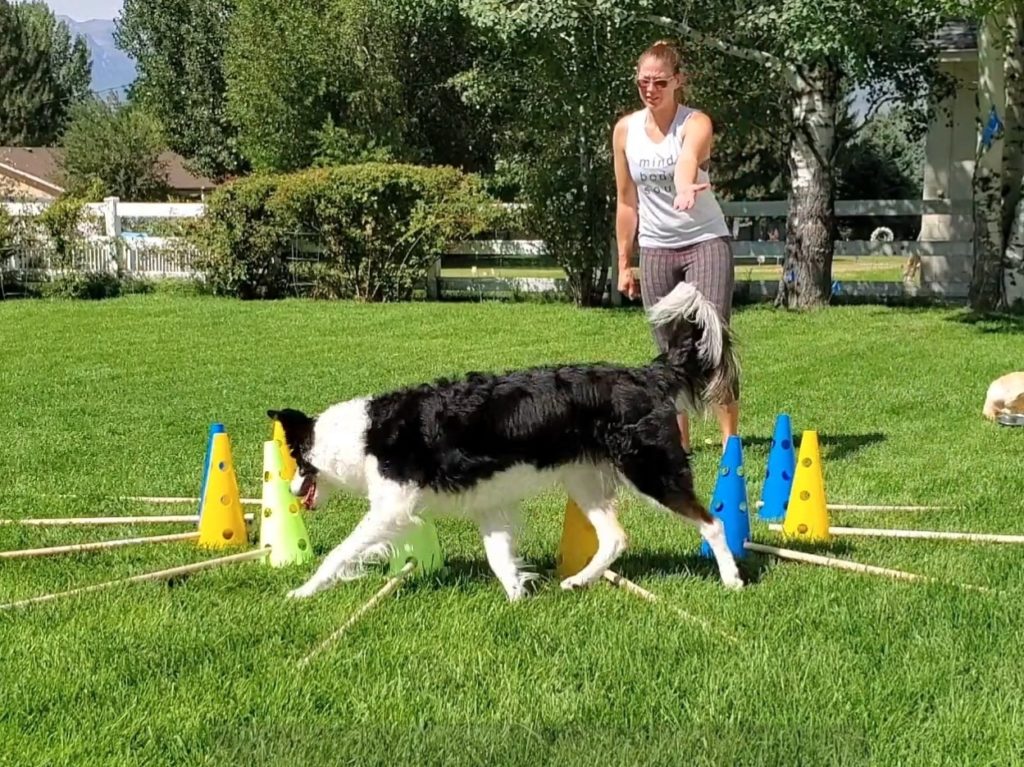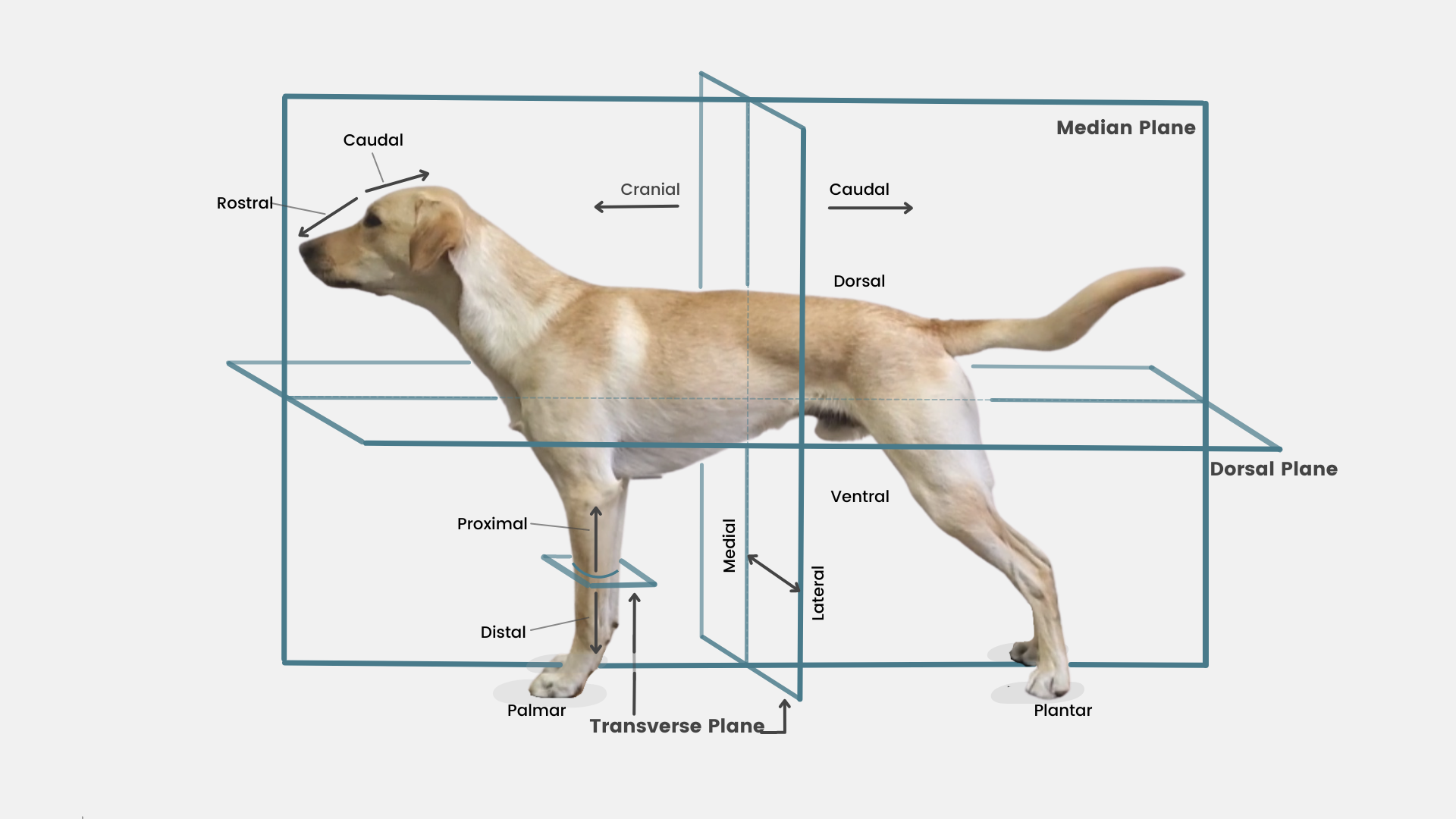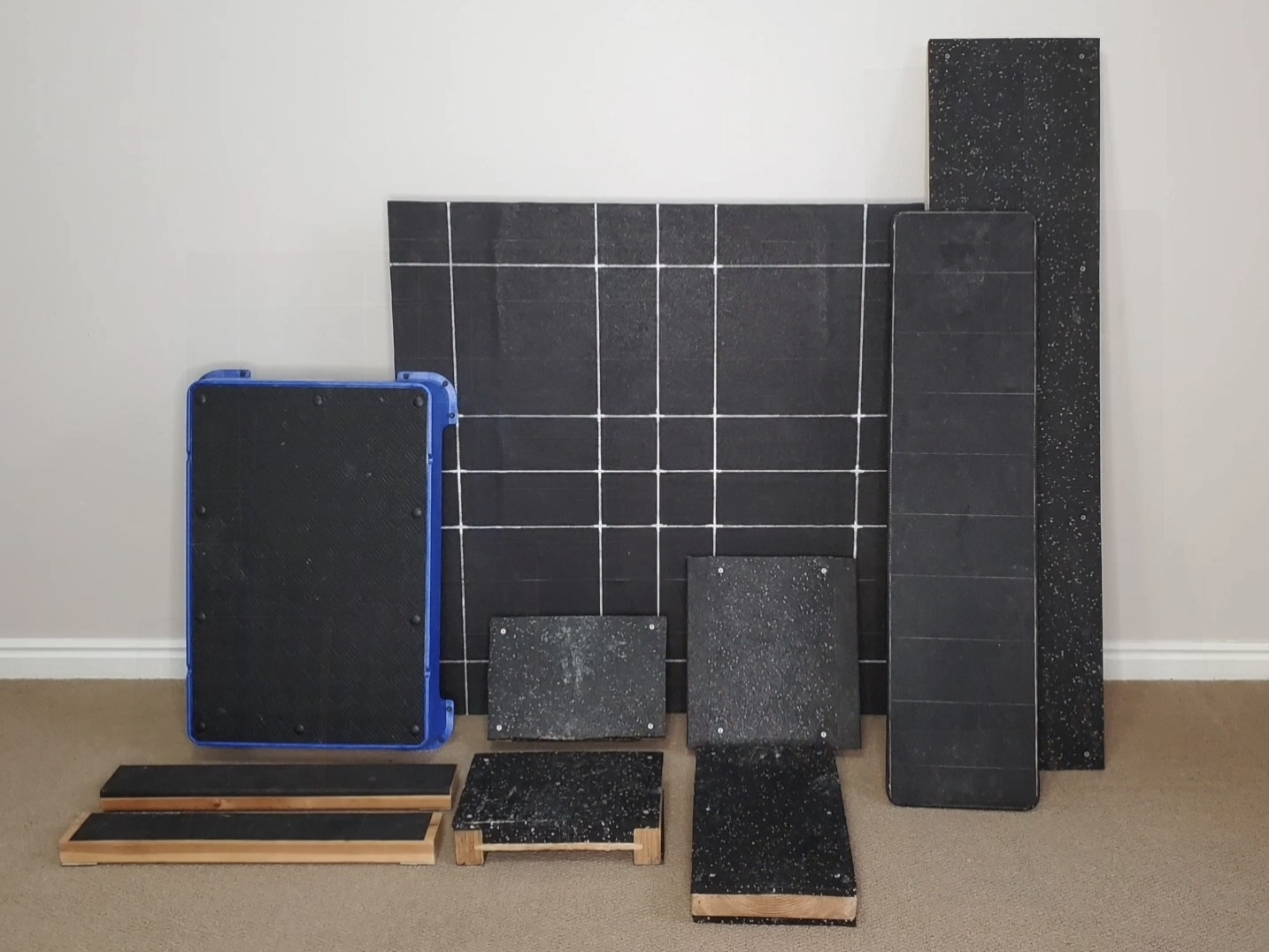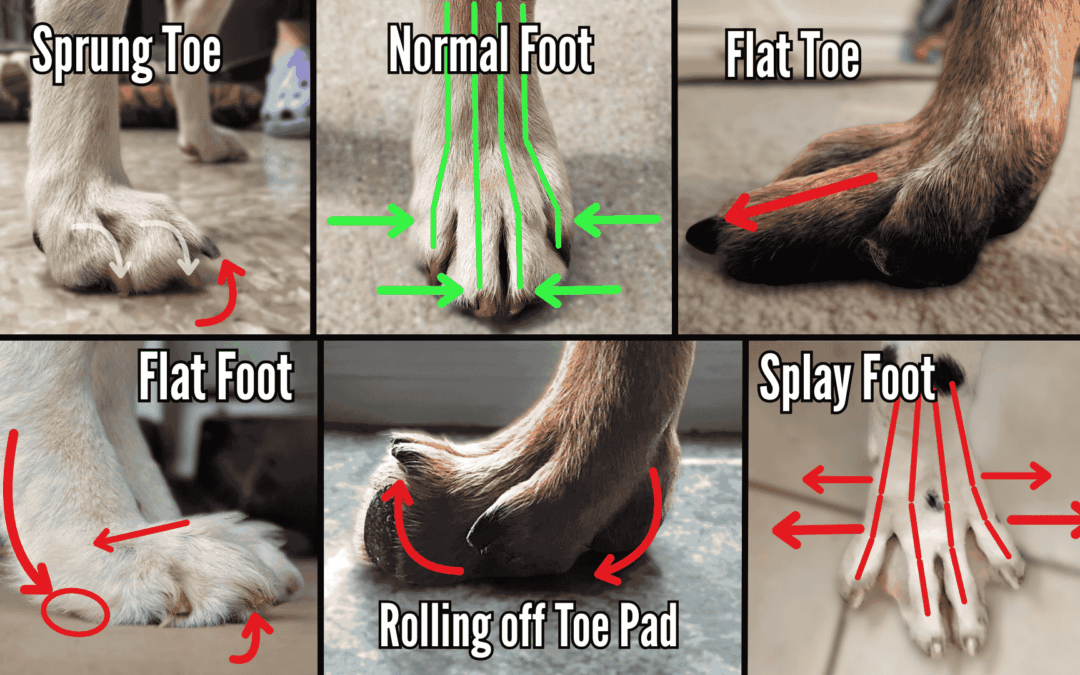Purpose: This video combines all components of previous variations together, and introduces the pup to an actual line of cavaletti poles. We combined the cone wrap learned in Part 1, with the distance, impulse control and footwork learned in Part 2, to set the pup up for success in this Part 3 variation.
The first portion of this video shows the successful second set of our first session implementing this Part 3 exercise. The second half of the video details our “failed” first attempt, troubleshooting, and adjustments. I know *I* learn more from watching people work through difficulty than just seeing it perfect, so I wanted to include that information as well.
Equipment: 2 larger cones or similar stanchions, Set of 10 Cavaletti poles
Targets: Cavaletti poles are a great way to improve flexibility through the hip and shoulder, create reach and drive, as well as teach proprioceptive speed. They can also help a dog to relearn how to use a limb after an injury or surgery. Cavaletti poles also help to increase load bearing on the individual limbs and improve muscle balance.
Setup: The formula for setting straight cavaletti poles is the bar 1″ (lower for tiny dogs) off the ground, and spaced apart the height of the withers as a starting point. Dogs with a longer loin (rectangle vs square) will likely need an extra few inches. Also, most professionals recommend keeping the bar set at 1″ (lower for tiny dogs) to work reach and drive, and promote natural movement. There are some situations where an unnatural amount of hip and stifle flexion is helpful, but the vast majority of dogs don’t need that specific challenge. If you are raising the bar, it should generally never be raised higher than hock height.
Watchpoints: This is an incredibly complicated exercise where many pieces have to fall into place at the right time in order for the dog to be successful.
I use a cone send to stay out of the picture, and help my dog focus forward. Other people use handler motion (running alongside the dog), or a food bowl/treat dispenser… But as this exercise progresses into circles, or figure eights, those applications can become cumbersome. So I teach continuous motion with little input from the handler from the beginning. If cones create immediate over arousal due to previous sport specific training a target / perch / mark bucket can easily be substituted for the cone.
Note: If my dog is…
- Struggling
- Unable to focus forward
- Overly reliant on the handler
- Showing lack of understanding
- Jumping poles
- Displaying over arousal
…the pup either hasn’t been properly prepared, there’s something about the environment (including his body) that is bothering / distracting him, or there’s some variable that I’m not noticing.
If a dog is well prepared, the foundation variations have been proven in the environment, and an issue arises, I never assume my dog is “blowing me off”, “being a jerk” or “stubborn”. That’s not a real thing.
